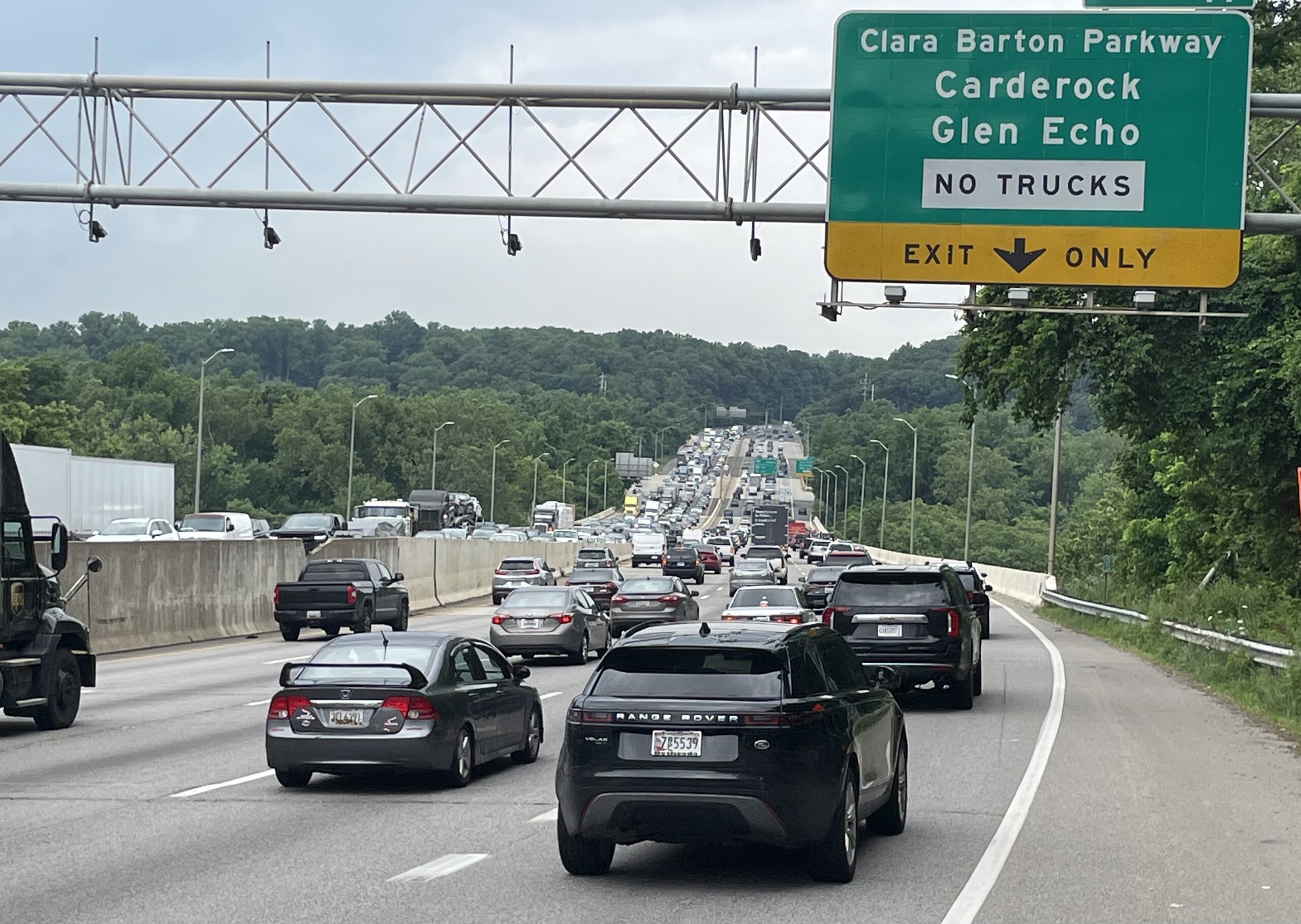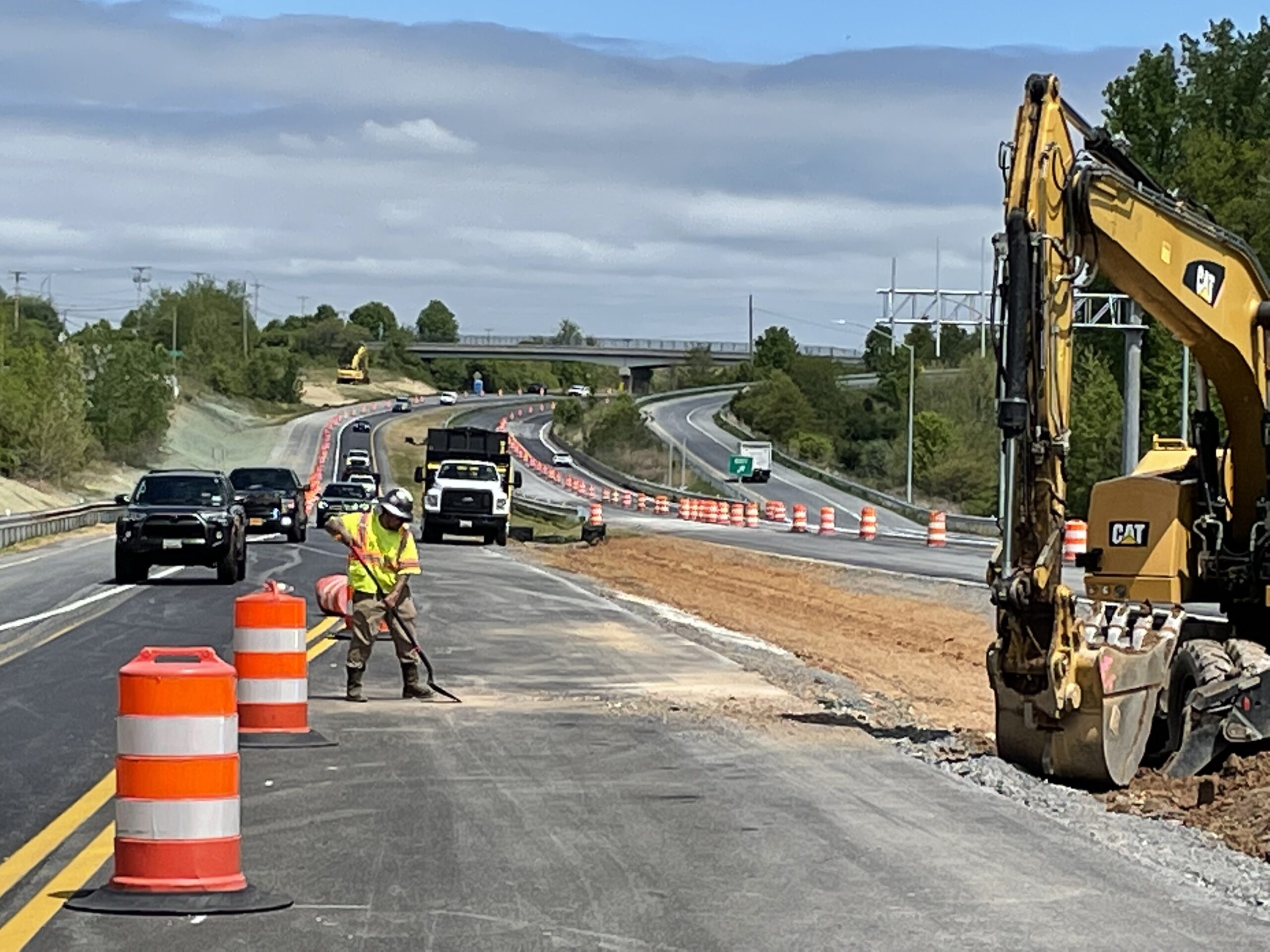Opinion: Revised I-495/I-270 Project Will Be ‘Political and Transportation Albatross’
The Washington Council of Government’s Transportation Planning Board removed the Capital Beltway and Interstate 270 proposed toll lanes plan from an important list of long-term transportation projects for the Washington region. The panel’s sign-off is necessary for projects that require federal approval.
The board made the right choice. The Maryland Department of Transportation has made a catastrophic miscalculation in two respects – political and technical.
MDOT recently removed from current consideration the portion of the proposed Beltway expansion starting at the eastbound I-270 spur and continuing through Prince George’s County after they had closed the public comment period for the project’s Environmental Impact Statement. Why take an action that requires a revision to the EIS statement and further public review?
It is apparent there was a clear hope that this maneuver would minimize opposition to the project.
The communities surrounding the portion of the Beltway project that was removed are probably the most potent force in Montgomery County Democratic politics and the most effective opposition to the project. You might expect that eliminating the threat to the abutting Prince George’s County, as well as Montgomery County communities, would weaken opposition to the remaining plan.
In addition, the swing vote on the Maryland Board of Public Works that must approve a predevelopment contract and the overall project is the state’s Comptroller Peter Franchot. He is running for the Democratic nomination for governor. One might conjecture that getting his vote might be made easier if potent participants in the Democratic primary were no longer threatened and motivated by an imminent construction project.
But in taking the lead to have the Transportation Planning Board remove the I-495/I-270 project from the transportation list, Montgomery County officials signaled the removal of the segment has not worked to alleviate political pressure.
Nevertheless, MDOT is pressing ahead with a so-called predevelopment contract of about $50 million to its selected contractor for the project. Any contract of this scale will make it politically more difficult to terminate the project – thereby heavily biasing the process to commit to a 50-year project before the pubic fully understands the cost and benefits of this scheme.
At this point MDOT apparently wants to build a project, any project.
Ironically, removing the eastern project segment undermines the rationale for even the revised project.
MDOT under its new plan proposes to end the Beltway toll lanes and collapse them into the existing lane configuration at a point on the Beltway between the two I-270 (west and east) spurs. Collapsing a road into fewer lanes always raises issues of increased congestion. MDOT will go from a planned six lanes (four non-toll lanes plus two toll lanes) to retaining the current four lanes — six into four.
The increased congestion will mean longer travel times for the toll road alternative than those projected by the current environmental impact statement. The longer travel times due to congestion under the new toll road plan makes the no-build alternative (keeping the current highways) more attractive.
Some with anticipation and many others with dread, understand that the travel times for trips going from west of the spurs to east of the spurs will increase significantly the day the toll road opens. On that day there will be a chorus of commuters demanding the two toll lanes of the inner loop be extended (with or without tolls) around the eastern portion of the Beltway.
Using MDOT’s current projections taken from the EIS released to the public, travel times are virtually identical for the morning-evening round trip from I-370 to River Road and back on the toll road’s non-toll lanes and the no-build alternative. The roundtrip in the non-toll lanes takes — 30.5 minutes and the no-build trip — 30.7 minutes — the difference is a pathetic 12 seconds. Why are the non-toll times important? Because about 85% to 90% of the toll road traffic is in the non-toll lanes and only about 10% to 15% of the traffic is actually in the toll lanes.
Now imagine adding this new chokepoint that backs up traffic in the non-toll lanes to at least where the inner loop of the Beltway splits into I-270 and the Beltway. In this situation it is almost certain a no-build roundtrip from I-370 to River Road will now be faster than the non-toll lanes (with its 85% to 90% of toll road drivers).
If we have more extensive chokepoint-caused congestion, then the no-build roundtrip to I-370 is likely to be faster than the non-toll times for all the other Beltway exits/entrances west of the spurs (Clara Barton and Cabin John parkways) and puts in question whether there is a non-toll lane advantage for travel times to Virginia.
Even the toll-lane travel times may not be better than the no build in certain circumstances. The original EIS projected toll-lane travel time on the northbound evening commute beginning on the I-270 spur at the Beltway and ending at I-370 is only 24 seconds faster than the no-build time. The toll-lane slowdown results from trying to squeeze seven lanes of the northbound toll road into the six lanes of the current I-270 configuration where the toll road ends. If the Beltway chokepoint also creates new congestion for the toll lanes at the split, then the travel time for the no-build alternative could easily be faster than the toll lanes for this segment.
Contrast these questionable benefits with the cost of the proposed project. The MDOT proposal will require the reconstruction of every interchange on I-270 and the two bridges over I-270. The ensuing years of construction chaos will damage the economic, environmental and community life of Rockville as well as cost hundreds of millions if not a billion dollars.
Moreover, I believe the I-495/I-270 project is likely not essential for any effective I-270 solution up-county, despite what has been assumed. In fact, the traffic management project (sensors and traffic lights on the ramps) that MDOT is about to initiate on most of I-270 is expected to reduce travel times by up to 40% right now.
The revised MDOT project is a mess and should not be supported.
Getting rid of a significant portion of an integrated project for apparent political reasons should be a signal to ask the question: What kind of political and transportation albatross will we be stuck with for the next 50 years?
— ARTHUR KATZ
The writer is a resident of Rockville.





 Creative Commons Attribution
Creative Commons Attribution